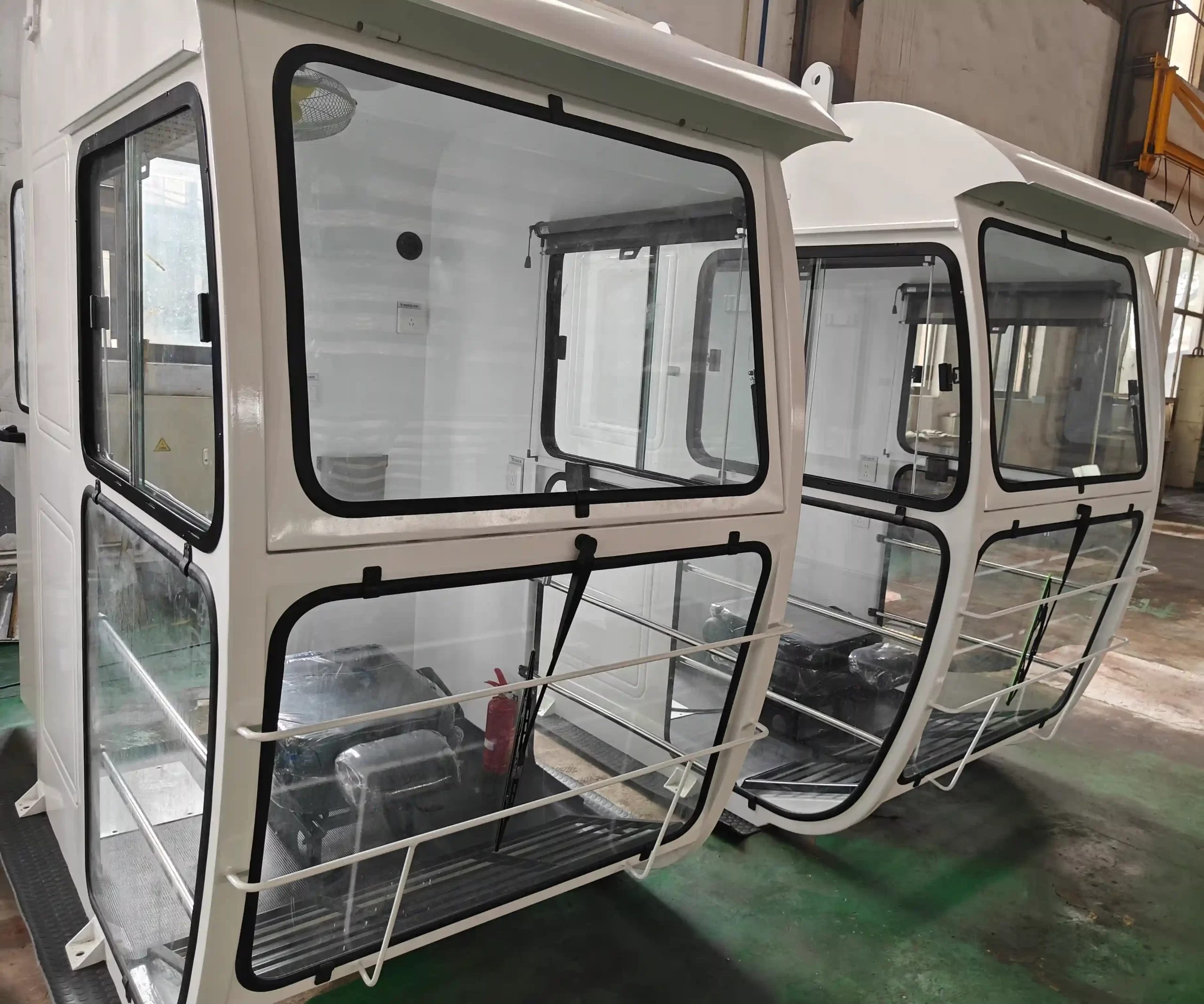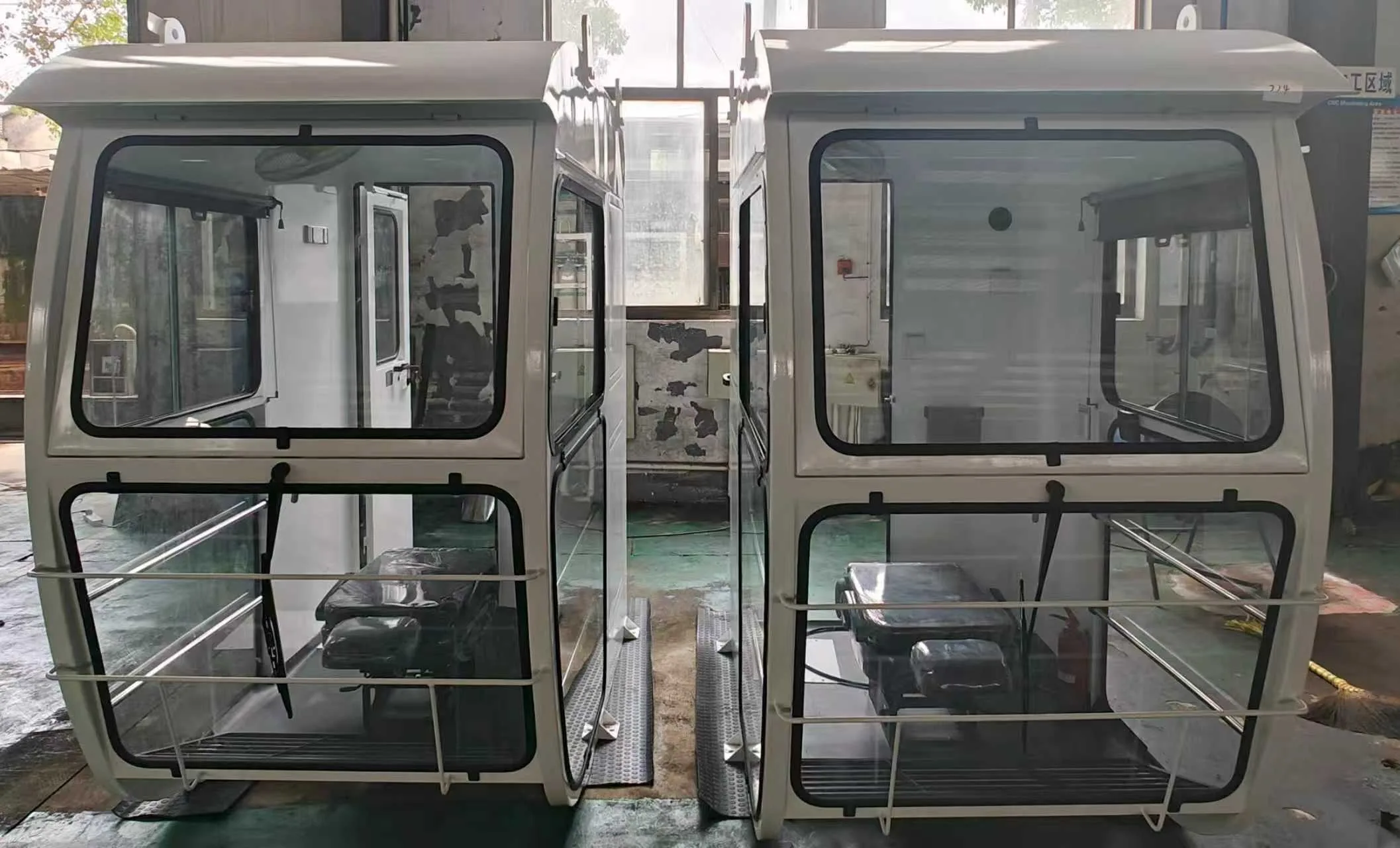The Role of Crane Cabins in Modern Construction and Material Handling
The Role of Crane Cabins in Modern Construction and Material Handling
Date: 2025-09-11 Share:
Introduction
Crane cabins are super key in today’s construction and material handling. They’re the main hub where operators steer cranes. These dandy control spots let folks lift heavy stuff with awesome care, keeping work safe, quick, and right on point in all sorts of places, gosh. As construction jobs grow bigger and tougher, crane cabins now pack snappy tech, cozy setups, and sturdy safety bits to meet today’s needs. This blog dives deep into what crane cabins do, their features, uses, and what’s coming up, showing how they zip up work and keep things safe across different fields, you bet.
Understanding Crane Cabins
A. Definition and Purpose
A crane cabin is the closed nook where operators run crane jobs. It’s stuffed with neat controls like joysticks, screens, and communication tools. The cabin’s big task is letting operators watch and guide crane moves right then and there. This keeps material handling safe and slick. With clear views and simple controls, crane cabins make placing loads super exact, cutting risks and speeding up work flow, for sure.
B. Key Features of Modern Crane Cabins
Modern crane cabins are made for operator ease and safety. Key parts include:
- Cozy Design: Movable seats, gentle lights, and roomy insides ease tiredness on long shifts. This keeps operators sharp and busy.
- Clear Visibility: Big windows, sometimes with cameras, show hooks, loads, and nearby areas clearly, ensuring tidy work.
- Safety and Strength: Built with heat-proof, fire-safe, and dust-tight materials, cabins guard operators from dangers. Closed designs block bad weather, noise, and flying bits.
- Custom Extras: Features like fancy joysticks, air conditioning, and touchscreen displays allow setups that match specific job needs, to boot.
C. Types of Crane Cabins
Crane cabins come in models like the NTC-1.2, NTC-1.4, and NTC-1.5, each crafted for certain jobs based on size, features, and crane type. They break down into:
- Fixed Crane Cabins: Still cabins for tower cranes in tall building projects.
- Self-Propelled Crane Cabins: Movable cabins built into cranes for easy site shifts.
- Trolley Crane Cabins: Made for overhead cranes in warehouses or factories, sliding side to side on tracks.
Custom touches, like leather seats, extra joysticks, or climate control, make cabins fit each project’s needs.
The Role of Crane Cabins in Modern Construction
A. Enhancing Operational Efficiency
Crane cabins let operators handle lifting and moving heavy loads with pinpoint care. This trims delays and speeds up tasks. Cool tech like real-time tracking and smart load sensors lets operators tweak moves on the spot, ensuring terrific performance, what’s more. In skyscraper, bridge, or road jobs, crane cabins smooth tasks, helping finish projects fast and cutting labor costs.
B. Ensuring Operator Safety
Safety is a massive deal in construction. Crane cabins are built to shield operators from risks. Sealed, insulated designs block extreme heat, dust, and noise. Wide windows and tracking systems give live views of hooks and loads. This lowers risks like tip-overs or falling stuff. Sticking to safety rules like OSHA keeps operators and ground crews safe.
C. Supporting Complex Construction Projects
Crane cabins are vital in city building with tight spaces. In skyscraper jobs, tower cranes with advanced cabins lift steel beams, concrete slabs, and glass panels to great heights with super accuracy. In bridge or highway work, cabins help place heavy pre-made parts just right, ensuring strong builds and hitting deadlines.
Crane Cabins in Material Handling
A. Applications Across Industries
Crane cabins are handy across many fields:
- Construction: Lifting and placing heavy stuff like steel, concrete, and pre-made structures.
- Warehousing and Logistics: Stacking and loading goods in warehouses or stockyards, making great use of space.
- Ports and Shipyards: Handling bulk cargo, containers, and heavy gear for sea work, speeding things up.
- Manufacturing: Moving big machine parts with precision on assembly lines.
B. Automation and Technological Integration
Modern crane cabins use spiffy tech to work better. Internet of Things (IoT) systems grab live data, allow remote checks, and spot maintenance needs, cutting downtime. Artificial Intelligence (AI) and machine vision help place loads exactly and avoid bumps, reducing slip-ups. Automated cabins ease operator tiredness, boosting accuracy in repeat tasks, on top of that.
C. Versatility in Outdoor and Indoor Environments
Crane cabins work in all sorts of spots. Outdoors, like on construction sites or ports, rust-proof and weather-tight designs stay tough in rough conditions. Indoors, small and flexible cabin setups fit warehouses and factories where space and movement count.
Benefits of Advanced Crane Cabins
Advanced crane cabins bring loads of perks:
- Faster Work: Cozy controls and live feedback make operations smoother, cutting delays and boosting output.
- Top Safety: Smart features like load sensors and emergency stops lower accident risks, keeping operators and site workers safe.
- Cost Savings: Sturdy materials and predictive maintenance tech cut repair costs and downtime, giving dandy value.
- Custom Fits: Tailored setups, from small shops to big projects, ensure top performance for specific needs.
Case Studies and Real-World Applications
- High-Rise Skyscraper Project: In a Dubai skyscraper job, tower cranes with NTC-1.5 cabins placed steel beams at over 500 meters. Advanced tracking and cozy controls kept operators efficient and safe, helping finish on time.
- Port Container Handling: At a major European port, self-propelled crane cabins with AI-driven load sensors boosted container handling by 30%. Live views and automated systems cut turnaround times and upped safety.
- Manufacturing Facility: In an auto plant, trolley crane cabins with IoT support moved heavy parts with little effort, speeding work and easing operator tiredness.
Future Trends in Crane Cabin Technology
The future of crane cabins looks swell with neat advancements:
- Automation and Robotics: AI-driven controls and robotic systems cut operator work, boosting precision in tough tasks.
- Sustainability: Energy-saving cabins with hybrid or electric power lower environmental impact.
- Smart Tech: IoT, data analytics, and predictive maintenance lift performance and trim downtime.
- Cozy Designs: Better seating, climate control, and simple interfaces focus on operator comfort and work speed.
About Nante Crane
Nante Crane is a world leader in cranes and crane parts, focused on delivering smart lifting and material handling solutions. With a wide range of products, including overhead, gantry, jib, launching, and offshore cranes, plus parts like hoists, winches, and crane cabins, Nante Crane serves industries globally. With heaps of experience, the company puts quality first, offering custom, high-performance products built for safety and efficiency in construction, manufacturing, ports, and logistics.
Check out how Nante Crane’s advanced crane cabins can lift your construction and material handling projects. Pop by Nante Crane’s official website for more on their smart solutions. Reach their team today to tailor a crane cabin for your project needs and boost efficiency and safety on your worksite, you bet.
Frequently Asked Questions (FAQ)
Q1: What is the primary function of a crane cabin?
A crane cabin is the control room for the crane operator. It provides comfy controls, wide visibility, and a safe space to manage crane operations smoothly.
Q2: How do crane cabins improve safety on construction sites?
Crane cabins offer insulated, closed designs and real-time monitoring. They follow safety standards, reducing risks like tip-overs and falling loads.
Q3: Can crane cabins be customized for specific projects?
Yes, Nante Crane offers custom crane cabins with features like leather seats, monitoring screens, air conditioning, and multiple joystick consoles to fit project needs.
Q4: What industries benefit from crane cabins?
Crane cabins help in construction, warehousing, logistics, ports, shipyards, and manufacturing for efficient and safe material handling.
Q5: How does Nante Crane ensure the quality of its crane cabins?
Nante Crane uses advanced tech, tough materials, and strict quality checks to deliver reliable, high-performance crane cabins tailored to industry needs.





